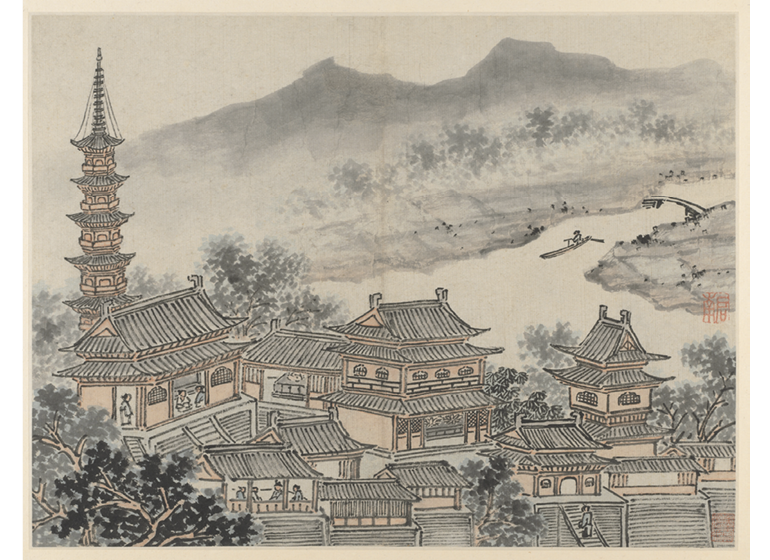Walking into “China’s Southern Paradise: Treasures from the Lower Yangzi Delta” at the Cleveland Museum of Art, you first encounter a small explanation of the area and the contributors to the exhibit. Then you walk into a smaller section with stoneware and silkworm cocoons. Here you can learn more about the process of creating the art and the history of the Lower Yangzi Delta. It gives you a great idea of how the exhibit will be laid out and what you will see as you walk through. You can observe the changes made to art as different decades go by, as dynasties grow and fall and as outside forces interact with the people there. It is like walking through history and seeing the Lower Yangzi Delta through the eyes of the common people who lived in the area.
The exhibit emphasizes the lives of everyday people in a lot of the art on display. This includes paintings of them doing tasks such as working in the fields, dealing with kids, washing clothes and living amongst the natural beauty of the landscape. The exhibit also speaks to the craftsmanship and detail of the works that came out of the Delta by incorporating pieces such as wooden chairs and giant stone carvings.
The walls are also painted to help you feel as if you are stepping into a different period, reminding you that you are moving through time. To help show that, much of the art includes imagery influenced by different religions including Buddhism, Confucianism and Taoism, each having periods of greater influence in the area. This iconography includes Buddhist monks, architectural styles and various traditions from each religion that influenced the Delta.
On top of that, the curator placed more modern pieces with the ancient ones to emphasize the beauty of the older pieces while also allowing for interesting temporal comparisons. The use of modern art falls more abundantly later in the exhibit, helping to show that you are entering a more contemporary period. This section also leads into the influence of the Western world on art from the Delta. The final section of the exhibit has pieces with Western influences made in the Yangzi Delta, and conversely shows how the Delta was interpreted by Western forces as well.
Everything in the exhibit is very well preserved and of great quality despite most of the objects being made of silk, ink, jade and stoneware. Silk, which makes up a majority of the exhibit, is one of the hardest things to preserve over time. It is an incredibly thin and delicate fabric that can be damaged from light exposure, so the amount of silk on view—especially at the level of quality that these pieces are—is incredible. The exhibit is very careful to make sure people walking through the exhibit do not take photographs of the fragile pieces, and the lights are kept low to make sure the fabrics are not exposed to dangerous levels of light. If you go, please be careful around the art and pay attention to the “no photography” signs.
While silk makes up a sizable portion of the exhibit, the different media of the pieces on display give viewers a look into life not typically seen in Western depictions of the area. My friend and I noted that there was little of the “traditional” white with blue coloring and the green jade that are typically associated with Chinese art and sculpture in the West. However, there was a lot of jade in other colors, which is popular in Chinese art today, as well as glazed stoneware that was just as gorgeous. One of our favorite pieces was one that was actually colored black. It was incredibly beautiful and stood out among the other pieces, defying the Western view of Chinese art.
It was an amazing experience, and I highly recommend that anyone interested in art go to the exhibit and experience the beauty of the Lower Yangzi Delta through time. If you know a lot about Chinese culture and art—or even if you know nothing at all—it is a great way to expand your knowledge base and be immersed in a culture that is often distorted in the modern Western world.


